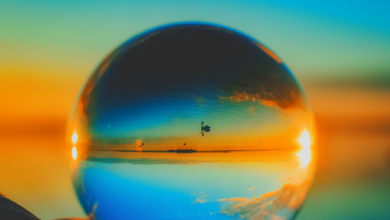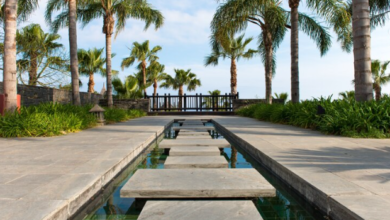Striking the Balance: Aesthetics and Practicality in Product Packaging

Striking the Balance: Aesthetics and Practicality in Product PackagingPackaging serves as the gateway to a product, often shaping consumer perceptions and influencing purchasing decisions.
In today’s competitive market, achieving a delicate balance between aesthetics and practicality in packaging design is essential. While aesthetics captivate consumers and convey brand identity, practicality ensures functionality and enhances the overall user experience.
In this article, we’ll explore strategies for harmonizing aesthetics with practicality in product packaging.
1. Understand the Product and Consumer Needs
Know Your Product Inside Out
Before diving into packaging design, it’s crucial to understand the product itself—its form, function, and unique attributes.
Consider factors such as product size, shape, fragility, and storage requirements. Tailor packaging design to accommodate these characteristics while ensuring optimal protection and presentation. For example, tea will always do better (and sell more) in airtight packaging compared to glass jars and boxes.
Know Your Audience
Understand your target audience’s preferences, behaviors, and expectations regarding packaging. Conduct market research, surveys, and focus groups to gather insights into consumer needs and desires.
Consider demographic factors such as age, gender, lifestyle, and cultural background when designing packaging that resonates with your target market.
2. Prioritize Functionality and Convenience
Design for Ease of Use
Practicality in packaging design entails prioritizing functionality and convenience for the end-user.
Opt for packaging solutions that are easy to open, close, and reseal, minimizing frustration and enhancing user satisfaction.
Incorporate features such as tear strips, degassing valves (where applicable), resealable closures, and ergonomic handles to facilitate effortless handling and storage.
Consider Transport and Storage
Take into account the logistics of product transport and storage when designing packaging.
Ensure that packaging is durable enough to withstand handling during shipping and storage while maintaining product integrity. Optimize packaging dimensions to minimize wasted space and maximize efficiency in storage and transportation.
3. Integrate Aesthetics to Enhance Brand Identity
Reflect Brand Identity
Aesthetics play a vital role in communicating brand identity and creating a memorable first impression.
Incorporate visual elements such as color schemes, typography, and graphic design that align with your brand’s personality, values, and target audience. Consistent branding across packaging builds brand recognition and fosters consumer loyalty.
Elevate Visual Appeal
Strike a balance between functionality and visual appeal by integrating aesthetically pleasing design elements into practical packaging solutions.
Experiment with textures, finishes, and embellishments that enhance the perceived value of the product and differentiate it from competitors. Invest in high-quality printing and finishing techniques to create packaging that stands out on the shelf and in online listings.
4. Optimize Sustainability and Eco-Friendliness
Embrace Sustainable Materials
Incorporate sustainability into packaging design by opting for eco-friendly materials and practices.
Choose recyclable, biodegradable, or compostable materials that minimize environmental impact and resonate with eco-conscious consumers. Communicate your commitment to sustainability through labeling and messaging on packaging.
Design for Minimal Waste
Reduce packaging waste by adopting minimalist design principles and optimizing material usage.
Streamline packaging structures to eliminate unnecessary components and excess packaging material.
Explore innovative packaging solutions such as lightweight materials, nested packaging, and modular designs that minimize environmental footprint without compromising functionality or aesthetics.
5. Test and Iterate for Optimal Performance
Conduct User Testing
Gather feedback from real users through focus groups, usability testing, and surveys to evaluate the performance of packaging designs.
Assess factors such as ease of opening, product protection, visual appeal, and overall user experience. Use insights from user testing to identify areas for improvement and refine packaging designs iteratively.
Continuous Improvement
Adopt a mindset of continuous improvement in packaging design, driven by feedback from consumers, stakeholders, and market trends.
Stay abreast of evolving consumer preferences, technological advancements, and industry best practices in packaging innovation. Iterate on packaging designs to adapt to changing needs and optimize performance over time.
6. Collaborate Across Disciplines
Foster Cross-Functional Collaboration
Encourage collaboration between packaging designers, engineers, marketers, and product developers to achieve synergy between aesthetics and practicality.
Foster an interdisciplinary approach that integrates diverse perspectives and expertise to address both creative and functional aspects of packaging design. Collaborative problem-solving leads to innovative packaging solutions that excel in both form and function.
Leverage Technology and Data
Harness the power of technology and data analytics to inform packaging design decisions.
Use computer-aided design (CAD) software to visualize packaging concepts and simulate user interactions.
Leverage consumer insights and market data to identify emerging trends, preferences, and opportunities for optimization in packaging design.
Conclusion
Balancing aesthetics with practicality in product packaging is a delicate yet essential endeavor for brands seeking to create memorable, functional, and sustainable packaging solutions.
By understanding product and consumer needs, prioritizing functionality and convenience, integrating aesthetics to enhance brand identity, optimizing sustainability and eco-friendliness, testing and iterating for optimal performance, and fostering cross-functional collaboration, brands can achieve harmony between form and function in packaging design.
Ultimately, packaging that strikes the right balance between aesthetics and practicality enhances brand perception, drives consumer engagement, and delivers a superior user experience that resonates with audiences worldwide.




